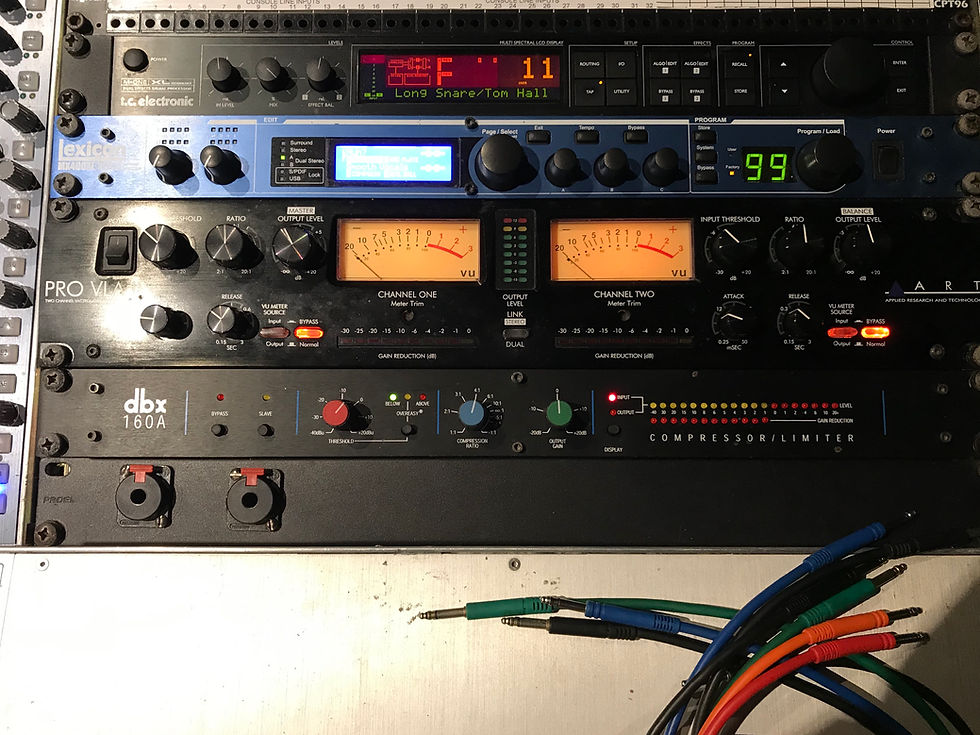How to setup Dual Reverb for one track
- Roy Fry

- Nov 2, 2021
- 3 min read
The idea for setting up a dual reverb on audio tracks is to give the impression of a natural reverb anolog sound, just as if you were recording a song on a tape machine in a hall and capturing all of the reverb sounds.

To the right, the chart is a digital representation of how an acoustic reverb sound is created, from the initial start (direct sound) till the end of the acoustic wav tail at the end (reverb tail).
Breakdown of reverb wav.
Direct Sound - the beginning of the acoustic sound wav.
Initial Delay - before the acoustic sound wav starts to reflect.
Early Reflections - the first stage of the acoustic sound wav reflecting off any object. For example - inside a room.
Reverb Tail - the acoustic sound wav slowly dispersing from reflecting.
How to set up any DAW to create a natural reverb sound.
l will use Pro Tools, as this DAW is considered to be the industry standard within the music industry.
Create two new auxiliary stereo tracks by using your shortcut commands on the computer keyboard. (shift+command+N)

In the new track window, change track selection to 2 by using the numeric key command.
Next, hold down the command key on your keyboard and use the left side arrows to scroll in the track format and then change to the new stereo.
Use the down arrow to select the auxiliary track in the track type window and then press enter. You have now created 2 new auxiliary tracks.
Relabel the auxiliary tracks.
The first track to be labeled - ER for early reflection.
The second track to be labeled - RT for reverb tail.
In the auxiliary named ER track put a reverb plug-in into one of the inserts.
Then in the other auxiliary named RT put another or same reverb plug-in into one of the 'inserts' section of the track.
Go to the I/O section of the auxiliary track named ER and in the input section, route a free stereo bus by clicking on the window which will open a new window. Now you can select a free bus which is written in grey.
Repeat the same steps for your other auxiliary track named RT and remember to select another free stereo bus in the input section.
Go to the track you want to create a natural reverb sound, and in the sends section of the track, click on (a) which will open a window and then click on the bus under the output selection. Select your ER auxiliary reverb stereo bus. (Check out below pic to the left for routing reference).


Do the same to the auxiliary RT stereo bus and select the sends button (f).
Repeat steps for auxiliary RT bus.

Now you have your 2 reverb auxiliary plug-ins routed into ' sends' of the track you want to add reverb on.
On the ER fader, gradually shift the fader upwards until you hear the reverb coming in. The idea for this reverb is to create an early reflection of the reverb. (l like to think that the ER reverb is like a ghost reverb, you can sense it rather than hear it.)
Once you are happy with the ER fader, gradually bring up the RT fader to the desired level. You now have created a natural reverb sound which will give you more control in creating better reverb choices.
If you want to see the small faders in the track, hold down the command key on the keyboard and click on the alphabet letters on the side of the buses in the 'sends' section.

Reference
Dual Reverb Mixing Trick. (2019, November 14). Retrieved November 28, 2019, from https://youtu.be/V402kIHc_2Y.



Comments